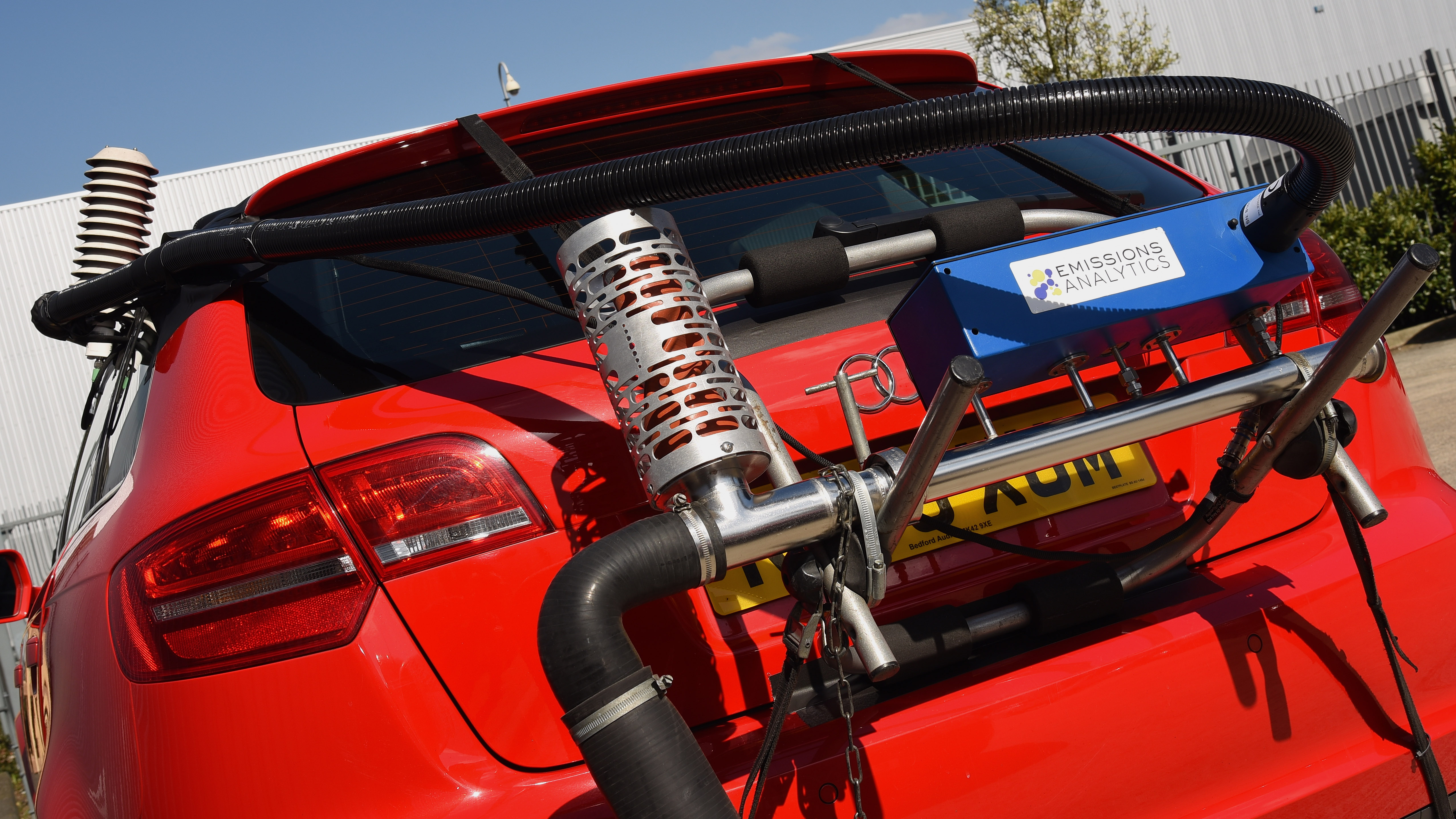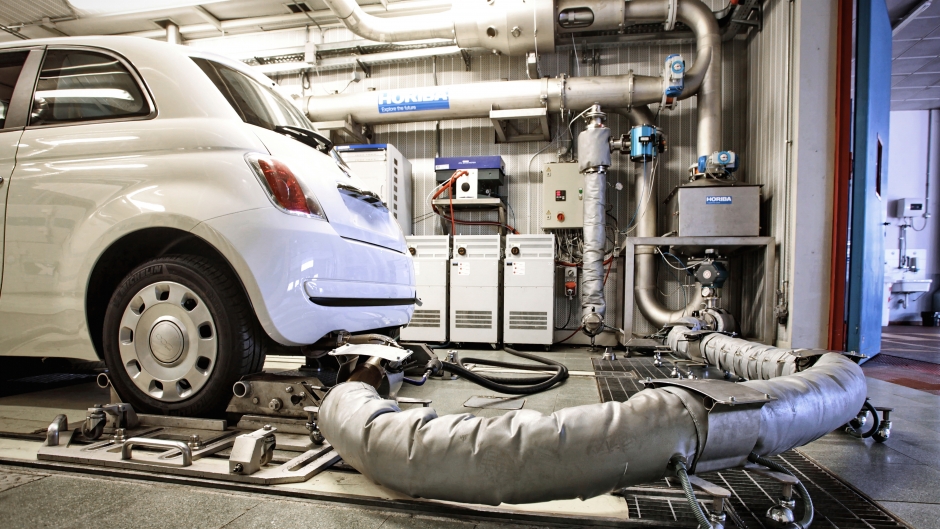What are Euro 6 emissions standards? Why you need to know
The latest emissions standards - and why they could save you hundreds of pounds: all you need to know about Euro 6 and Euro 6d cars

Governments have in recent times become increasingly keen to tighten the screws on higher emissions cars via the tax system, as well as rewarding the cleanest ones. It means buyers of both new and used cars need their wits about them, because picking a car with the wrong emissions rating could cost you hundreds of pounds in unnecessary company car tax. It could also expose you to significant daily charges if you drive into an Ultra Low Emission Zone (ULEZ) like the ones in London and Birmingham.
So as well as looking for the right make, model and specification, diesel buyers especially need to check the emissions rating of any potential purchase. If you want to stay one step ahead of the tax man or the ULEZ charges, then you may want to find a car that is Euro 6 rated.
Euro 6 is the name given to a set of limits for harmful exhaust emissions produced by virtually any vehicle powered by petrol or diesel engines - this includes hybrid cars, too, because they also use a petrol or diesel engine under the bonnet alongside their electrical elements. Since September 2015, manufacturers have been obliged to ensure that new car emissions do not exceed those limits - as measured in an official test.
The Euro 6 standard gained increased importance in 2019 because it encapsulates the criteria with which new ultra-low emission zones (ULEZ) and clean air zones (CAZ) are currently enforced.
Within these zones, any diesel car or van that doesn't meet the Euro 6 requirements will be subject to a daily charge of up to £12.50 when driving in the city centres, in an effort to improve air quality. Rules for petrol vehicles are less strict because they have historically produced less toxic emissions.
So, if you're buying a diesel car, a Euro 6-compliant model will ensure that you avoid ULEZ and CAZ charges under current rules. Petrol buyers don't need to worry about these fees unless their car was registered prior to 2006.
That's not the whole story, though. New types of emission testing have generated even more jargon, including WLTP, RDE2 and Euro 6d. Some of these could affect the amount of car tax and company car tax that you pay. Read on for full details.
What are the Euro 6 emissions standards?
Euro 6 emissions standards set the maximum limits for certain harmful gases and particulate matter a car is allowed to emit - chief amongst these are nitrogen oxides (NOx) and hydrocarbons. Petrol and diesel cars are both subject to slightly different limits.
The Euro 6 standards replaced the previous set of limits - known as Euro 5, particularly tightening the restrictions on diesels. For a diesel to be Euro 6 compliant it cannot emit more than 80mg/km of NOx gases, while a petrol car can emit no more than 60mg/km.
Virtually every brand new car sold since September 2015 has had to meet the Euro 6 standard, while many cars were compliant before that. However, the way that emissions are tested has changed to become more realistic, and this has led to the latest Euro 6d standard being introduced.
Euro 6d diesel cars

At first, Euro 6 cars were tested for emissions and fuel economy in a laboratory, on a rolling road. These tests were notoriously unrealistic when compared with real-world driving, where fuel economy was much worse and emissions much higher.
The old test could also be manipulated - as illustrated by the 'dieselgate' scandal, where several manufacturers were exposed as cheating the system.
As a result, a new way of testing cars has been developed, involving mobile exhaust monitoring equipment (shown above), which measures emissions in real-world driving. From September 2019, every type of new car must have gone through a road test to monitor emissions. The limits are higher than those in the laboratory test, and this standard is called Euro 6d-TEMP.
But from January 2022, new cars must pass the real-world test with lower limits, effectively equalling the levels in the laboratory test (with some allowance for the weight and aerodynamic impacts of the equipment). This standard is called Euro 6d and is expected to result in much cleaner new cars.
For all cars that can meet these new standards, they will be cheaper to tax, particularly for business users, because Euro 6d diesel cars will not be subject to the 4% company car tax surcharge that applies to all other diesel cars. That could save a higher-rate taxpayer almost £500 a year for a £30,000 car.
Car tax for non-company car drivers will also be lower in the first year for Euro 6d diesel cars, as they won't be bumped up a car tax band, as other diesel cars currently are.
Some of the first diesel cars on sale that complied with these new standards were the Mercedes A-Class, Mercedes GLE, Jaguar XE, Jaguar XF, which make for some of the cheapest options when it comes to searching for a used car.
Petrol cars must also meet the same Euro 6d limits, but there are no current benefits to buying a Euro 6d version compared with one that complies with earlier standards, besides the evident reduced environmental impact, but if that's your primary concern, it may be worth considering hybrid options, or going electric.
What are RDE and RDE2?
RDE stands for Real Driving Emissions and is the on-road driving test that cars must undergo to ensure that they comply with Euro 6d-TEMP limits. RDE2 is the same procedure but with stricter limits to comply with the Euro 6d standard.
What are NEDC and WLTP?

Car emissions continue to be measured in a laboratory, in addition to real-world testing, and this procedure has recently been tightened up.
Until recently, every car went through a cycle of accelerating, coasting and slowing down, called the New European Driving Cycle (NEDC). It's not new, though; this test originated in the 1970s and was designed for cars that were considerably less powerful and less well-equipped than modern vehicles.
As such, it simply didn't reflect how cars are now driven, and produced unrealistically low emission measurements and high fuel economy figures.
In September 2017, it was replaced by the Worldwide harmonised Light vehicle Test Procedure (WLTP), which involves harder acceleration and more time at high speeds. This makes it tougher to pass, ensuring that new cars really are clean and generating fuel economy figures that are more realistic.
Identifying a Euro 6 car

As Euro 6 became mandatory on all new cars from September 2015, many cars registered before that time – those on 2015 (15/65) registration plates and earlier – might only be Euro 5. However, many cars met the standard early - such as the Mazda CX-5 that was launched way back in 2012.
So there are plenty of used cars on the market that could comply with Euro 6. You'll find a car's emission standard in the technical information that accompanies many listings on BuyaCar. Be sure to ask for this to be double-checked to avoid the possibility of being hit with pollution charges in the future.
Benefits of a Euro 6 car
Emission-related charges
Motorists entering central London have to pay the ULEZ charge if they are behind the wheel of a car that does not comply with the emissions limits. For petrol cars, this means they must at least meet Euro 4 standards, but for diesels, they must at least meet Euro 6 standards.
London's ULEZ zone expands in October 2021 to cover a greater area, up to (but excluding) the North and South Circular roads.
Birmingham has already introduced its own ULEZ and other cities in Britain are planning to follow suit, so, if you live in a city, getting a cleaner car could well save you money every day. Read more
Company car tax
The benefits of buying a Euro 6 car depend on which sub-category you buy. Most don’t cut the mustard for those wanting to pay the least company car tax possible.
At the moment, diesel company cars automatically cost another 4% in tax over a petrol with the same emissions, unless it's one of the growing number that meets the Euro 6d standard. For this reason, it makes sense to opt for cars that are at least Euro 6d compliant if you want to make the most savings, as well as the fact you are buying a more environmentally friendly car. Read more
Car tax (VED)
While individual car CO2 emission limits are not covered by Euro 6, compliant cars tend to have reduced CO2 emissions. Therefore, the better sub-category of Euro 6 a car meets, the more likely it is to have lower CO2 emissions, and the less it will cost you each year in VED (vehicle excise duty, or road tax). That said, there is a VED levy for diesel cars that do not meet RDE2 standards. While the extra tax can cost under £20 for the year, it can also cost over £500 – so choose your car carefully. Read more
Euro emissions standards
| Emissions standard | Details | Emission Zone and tax benefits |
| Euro 4 | Mandatory for all types of new car from January 2006 | Minimum standard for petrol cars to be exempt from London ULEZ and Birmingham CAZ |
| Euro 5 | All types of new car had to comply from January 2011 | |
| Euro 6 | New cars had to be Euro 6-compliant from September 2015 | Minimum standard for diesel cars to be exempt from ULEZ and CAZ |
| Euro 6d-TEMP | New cars must meet real-world testing limits from September 2019 | |
| Euro 6d | Tougher real-world testing limits are mandatory for new cars from January 2022 | Diesel cars exempt from company car and car tax surcharges |
Euro 7 emissions standards
It is expected that the Euro 7 standard will be brought in by the end of 2025, however very little is known about what will change. Speculations vary, from small revisions to the current Euro 6 regulations to a more detailed revision of CO2 and NOx emissions, and possibly other pollutants. A third scenario could see emissions being measured over a car's lifetime - the current WLTP setup tests cars for less than 15 miles.
